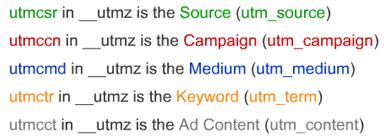The secret to traffic analysis
 It is logical that effective promotion includes not only the choice of channels for attracting users, but also traffic analysis with the further configuration of each channel. The goal of customization is to increase the return on invested resources and increase conversion.
It is logical that effective promotion includes not only the choice of channels for attracting users, but also traffic analysis with the further configuration of each channel. The goal of customization is to increase the return on invested resources and increase conversion.Introduction
I think that no one doubts that it’s better to track not the overall return on all site promotion activities, but the effectiveness of each promotion channel separately.
By the site promotion channel in this post, I mean any way to attract users: SEO, contextual advertising, media, articles on thematic sites, etc.
I must say right away that the article is more focused on regular corporate sites, since in my opinion it is easier for online stores and services to single out the goal of attracting traffic: purchase, registration, download. And already this goal is set in the statistics collection system. Setting a goal means registering the viewing of the desired page, for example, "Thank you for your purchase." By the way, Google Analytics users can track eventsusing _trackEvent, which adds flexibility.
Returning to corporate sites, we need a plate like this:

* The data are taken from personal experience, and do not have a political motive.
When you have such a sign, everything becomes simpler, and you can immediately see what you are paying for and where you should pay attention. Naturally, the more detailed the table, the better the analysis. For example, for the same contextual advertising, you can specify not the general “Direct” and “AdWords”, but specify them to ad groups or keywords.
Register promotion channels
The first thing you should start with is to mark all links, that is, add parameters to the link, for example: sitename.ru/super-tovar/? marker = direct (it is important that the engine of your site allows adding extraneous parameters to the links). Thus, in the statistics of visits you will see transitions to the site from different promotion channels.
I love Google Analytics , so I’ll continue to focus on it. For its work, Google Analytics uses cookies, and the most interesting is __UTMZ :


It is important for us that it stores the source, the means of transition (for example: CPC, banner, e-mail), the name of the advertising campaign. And in this cookie you can write the desired value by simply adding special parameters to the URL. You can use the Google link builder or handles:
sitename.ru/? utm_source = yandex_direct & utm_medium = CPC & utm_campaign = ya_direct_camp
This is an example of a link for Yandex.Direct, here yandex_direct is the traffic source, CPC is the means, ya_direct_camp is the name of the advertising campaign.
After that, in the analytics on the page “All traffic sources”, you will see transitions from different promotion channels, for example like this:

Contact Accounting
Now it is extremely important to accurately calculate the number of contacts (calls, letters) from each channel. We continue to use Google Analytics for calculation.
Messages sent using the feedback form can be read by tracking events or sending a person to sitename.ru/send-message-ok/ : “Thank you, your message has been delivered to us. We will reply within 24 hours". And just count the number of clicks to our page for each channel.
But to count the number of calls and emailson each channel, you have to dodge. We will need several telephone numbers (landline numbers from mobile operators are now inexpensive, you can use the services of IP-telephony operators or just use the available numbers) and access to the site templates. The idea is ugly simple: take __utmz, extract the source and show each source your contact phone number and e-mail. Do not forget about another set of "default" (in case the source is not defined or not configured). I’m not a programmer, so I asked my friend to write a few lines of code (we will show special contacts to users from Yandex.Direct, while the links in the ads from the advertising campaign are marked):
$output = '';
$__utmz = explode('.',$_COOKIE['__utmz']);
$__utmz = explode('|',$__utmz[4]);
$param = array();
foreach ($__utmz as $value) {
$value = explode('=',$value);
$param[$value[0]] = $value[1];
}
if ($param['utmcsr'] == '(yandex_direct)'){
$output = 'Телефон: (321) 123-45-67
E-mail: contact@sitename.ru';
}
if ($output == '') {
$output = 'Телефон: (321) 123-45-65
E-mail: info@sitename.ru'; }
echo $output;
?>Calculation of sales value
If sales statistics are collected, then it will not be difficult to calculate the price of one sale for each channel.
Once you have all this information, start optimizing your website promotion channels.
The most interesting thing is that every time I do not cease to be surprised at the results of the analysis. And I’m very interested to hear your decisions: how do you optimize your advertising costs? And what was unexpected for you when analyzing traffic?
PS Thanks to the author of the illustration, Natalia Rerekina.
